Lower lateral cartilage strut grafting
A very powerful method of enhancing tip shape, support and function is by using lower lateral crural (LLC) strut grafts. Lower lateral crural strut grafts can be used to fix both external nasal valve collapse and nasal tip bulbosity.
How LLC strut grafts treat external valve collapse
In some people the lower lateral cartilages do not provide enough support of the external nasal valve and lateral nostril region. This can result in dynamic collapse of the nostrils with inspiration or even baseline pinching of the tip. Another problem that strut grafts can address is internal recurvature of the lower lateral cartilages. This refers to how the ends of the lower lateral cartilages curve inward into the nasal airway.
Where are the lower lateral crura?
To start let's review where the lower lateral cartilages (LLCs) are.
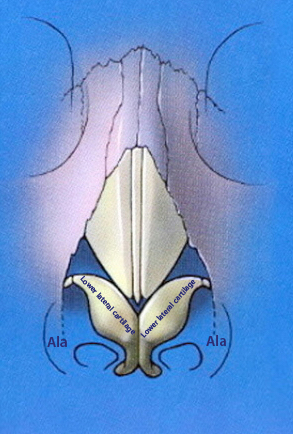
You can see how the lower lateral crura provide a large portion of the nasal tip and sidewall support. In some people these cartilages are quite soft whereas in other people the cartilage is quite firm and resistant to collapse.
How should the lower lateral crura look?
The LLC orientation plays an important role in how the nose will ultimately look and function. If the LLCs are convex the tip will have a more full or bulbous appearance. If these cartilages are concave the tip will appear more pinched. When you see the underlying structure of an aesthetically appealing tip you'll notice that the LLCs are typically flat.
How to create flat LLCs?
The ability to reliably modify the lower lateral crura shape is key to obtaining consistent rhinoplasty results. There are a few ways of converting convex LLCs into a more flat orientation. This includes suture techniques such as dome binding sutures and cartilage removal techniques such as LLC cephalic trimming.
LLC strut grafting has the benefit of being able to both flatten the LLCs and add strength to the nasal tip and external nasal valve.
How are lower lateral crural strut grafts used?
LLC strut grafts are composed of a straight, relatively strong piece of cartilage (usually septal or rib) that is carved into a rectangular shape. The first step in graft placement is to perform a cephalic trim which involves trimming the upper portion of the lower lateral cartilage. The photo below shows this cephalic trimming process:

This allows access to the underside of the LLC where the lower lateral crura can be dissected away from the underlying nasal skin lining.
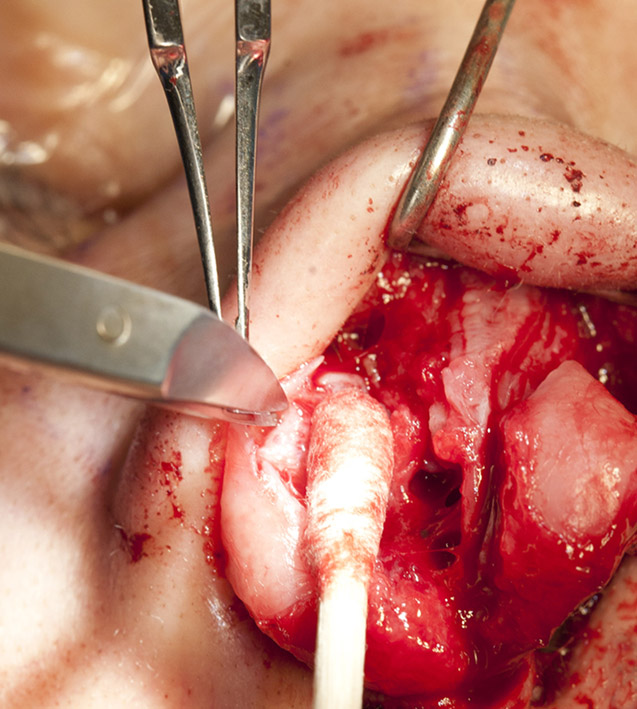
Further dissection allows for creation of a large enough pocket in which to place the graft:
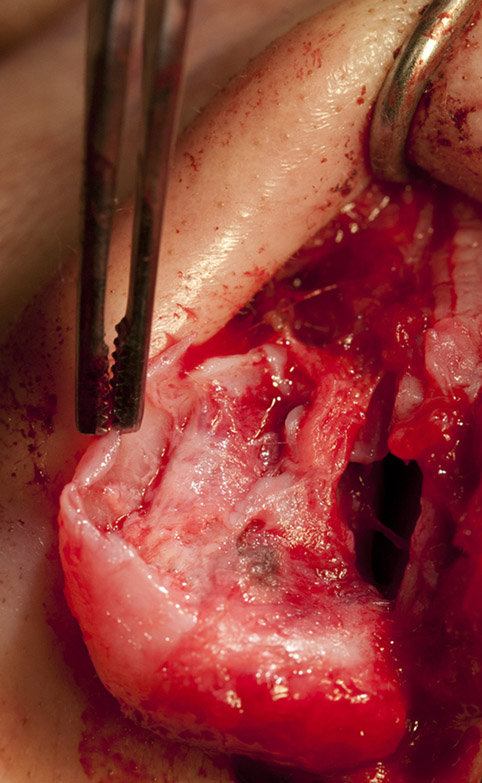
The strut grafts are then inserted in this pocket that has been created between the LLCs and internal skin lining:
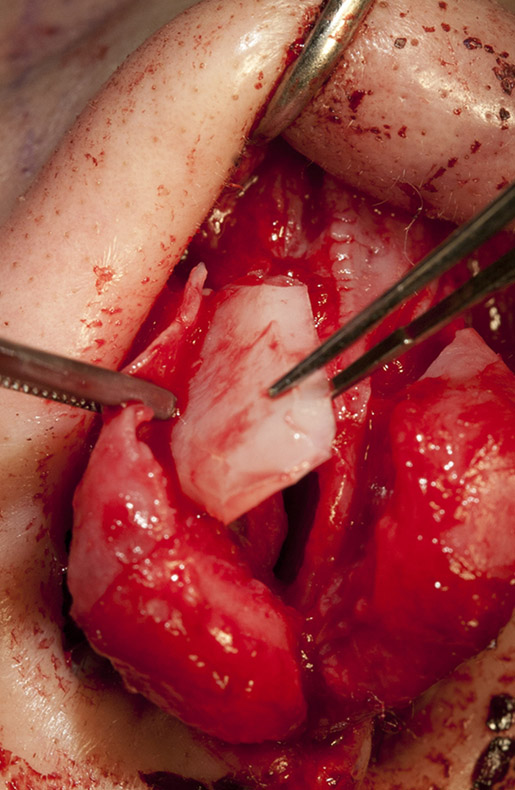
The graft is then sutured to the LLC above. Either permanent or long lasting dissolveable suture can be used.
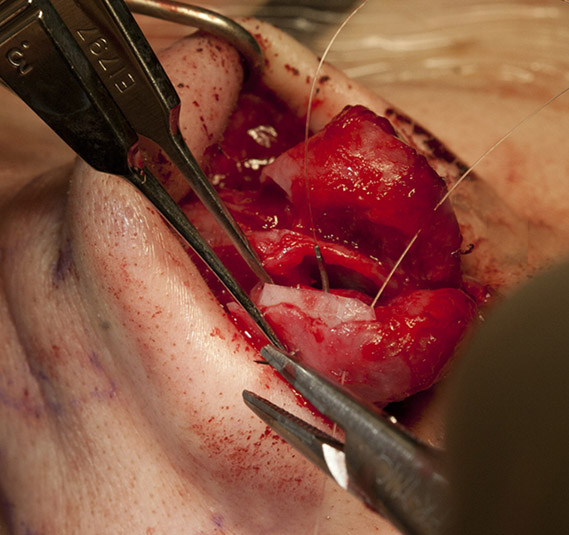
The strong, straight strut grafts then act as I-beams and cause the LLCs to flatten as they take on the same shape as the strut graft. This photo shows a different patient's bulbous tip cartilages before LLC strut graft placement:
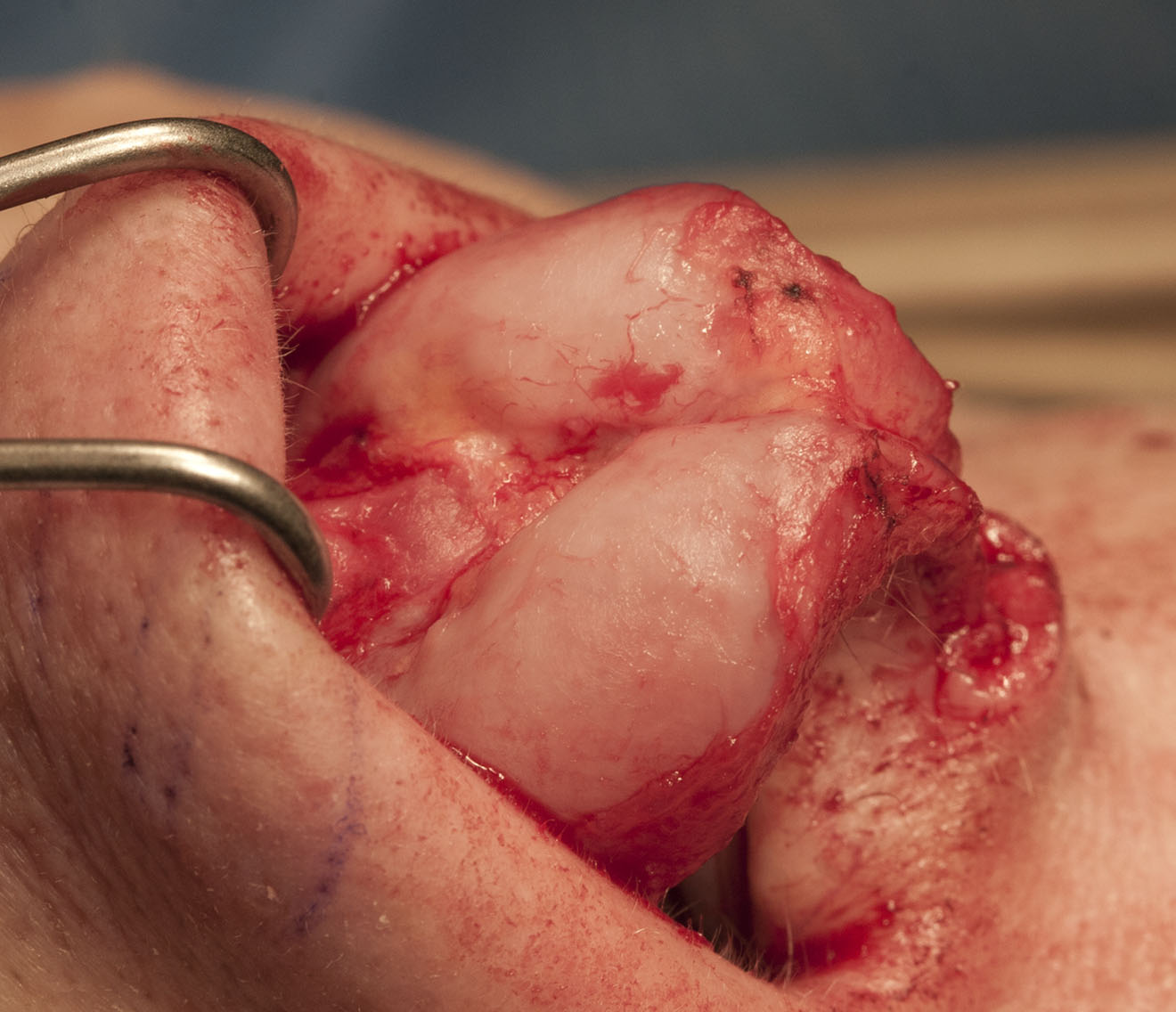
And here are the same patient's lower lateral cartilages after LLC strut graft placement:
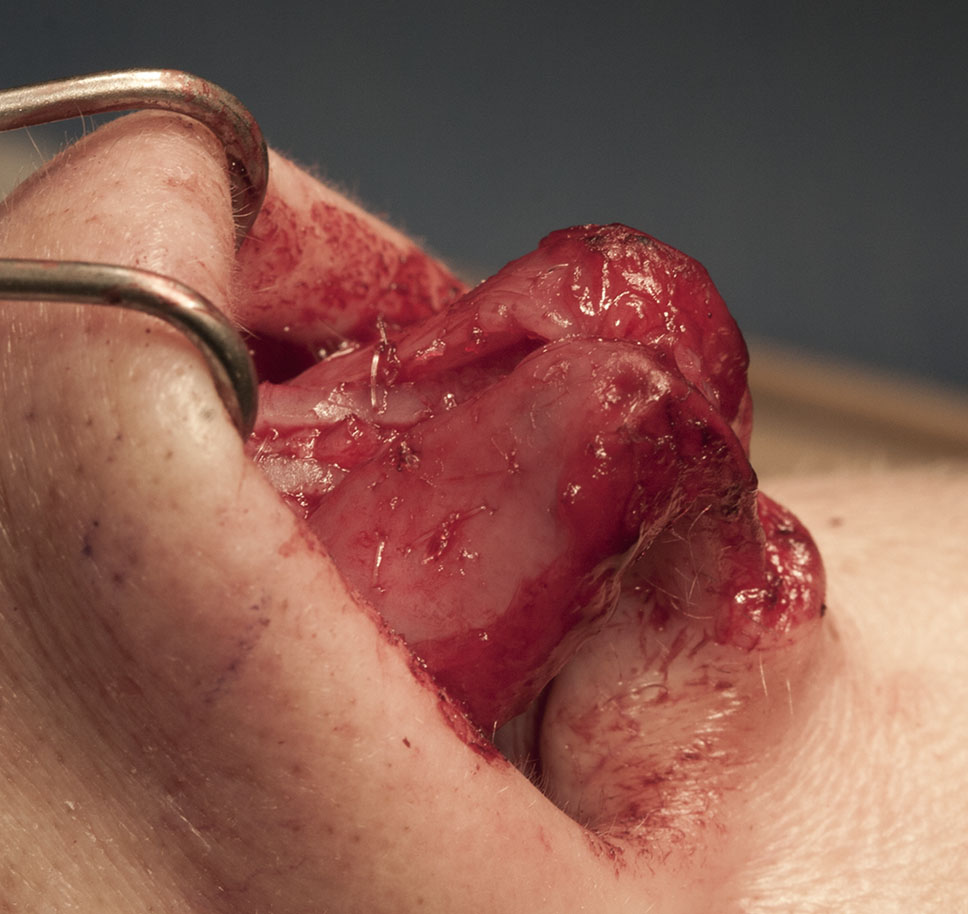
The LLCs after strut placement are not only straighter, but thanks to the added support they are also stronger. This added strength allows us to improve external nasal valve collapse by better supporting the outer nostril walls during inspiration. The following schematic gives a great overview of where the LLC strut grafts are placed:
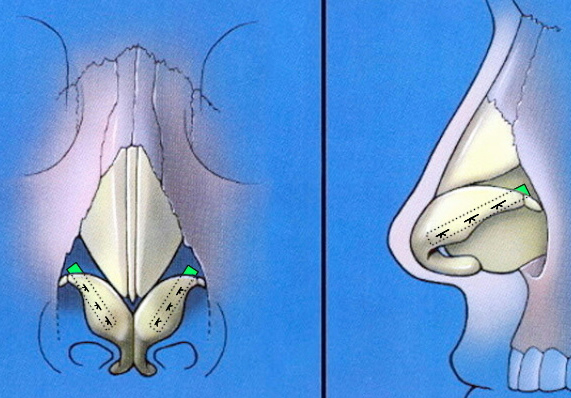

Meet Plastic Surgeon, Dr. Lamperti
Dr. Lamperti, a Seattle rhinoplasty super-specialist, has devoted his career to treatments of the head, face and neck. He feels that by focusing his plastic surgery endeavors solely to the face he is best able to provide the excellent results his patients desire.
Interested in learning more about having a Rhinoplasty Treatment in Seattle with Dr. Lamperti?
Contact us to have a private consultation or view Before & After photos here.